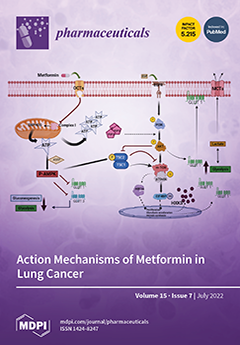Despite much interest and studies toward the genus
Podocarpus, the anti-malarial evaluation of
Podocarpus polystachyus’s phytoconstituents remains lacking. Herein, the phytoconstituents of
P. polystachyus leaves and their anti-malarial effect against
Plasmodium falciparum were investigated for the first time. One new natural
[...] Read more.
Despite much interest and studies toward the genus
Podocarpus, the anti-malarial evaluation of
Podocarpus polystachyus’s phytoconstituents remains lacking. Herein, the phytoconstituents of
P. polystachyus leaves and their anti-malarial effect against
Plasmodium falciparum were investigated for the first time. One new natural product, 8ß,13ß-kaur-15-en-17-al (
1), along with three known compounds, 8ß,13ß-kaur-15-en-17-ol (
2) and 13ß-kaur-16-ene (
3), and α-tocopherol hydroquinone (
4) were isolated via HR-ESI-MS and NMR analyses. Compounds
1 and
2 inhibited
P. falciparum growth at 12 and 52 µM of IC
50, respectively. Their anti-malarial activity was associated with the in silico
P. falciparum lactate dehydrogenase (
PfLDH) inhibition. Molecular docking of ligands
1 and
2 with the putative target
PfLDH revealed ~−2 kcal/mol of binding energies more negative than the control. Molecular dynamic simulations (100 ns) showed equal or smaller deviation values (RMSD, RMSF, Rg) and stronger interactions of
PfLDH-
1 and
PfLDH-
2 complexes via at least one consistent H-bond than the control. Additionally, a slightly increased
PfLDH H-bond profile in their interactions improved the
PfLDH dynamic and structural stabilities. Overall, this study supports the relevance of
1 and
2 as plasmodial growth inhibitors with their putative anti-
PfLDH activity, which could be a potential scaffold for developing anti-malarial drugs.
Full article






